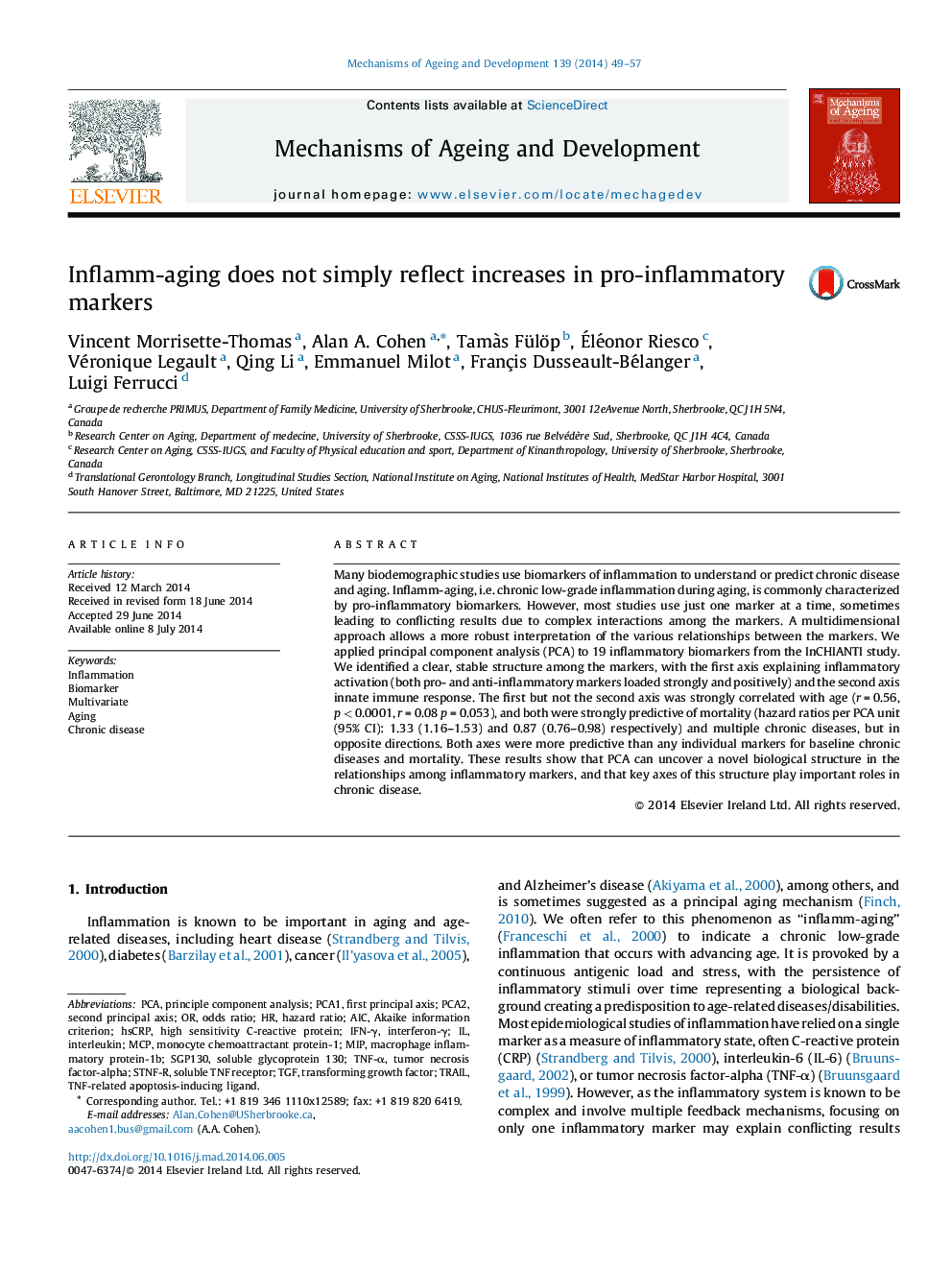| Article ID | Journal | Published Year | Pages | File Type |
|---|---|---|---|---|
| 8284944 | Mechanisms of Ageing and Development | 2014 | 9 Pages |
Abstract
Many biodemographic studies use biomarkers of inflammation to understand or predict chronic disease and aging. Inflamm-aging, i.e. chronic low-grade inflammation during aging, is commonly characterized by pro-inflammatory biomarkers. However, most studies use just one marker at a time, sometimes leading to conflicting results due to complex interactions among the markers. A multidimensional approach allows a more robust interpretation of the various relationships between the markers. We applied principal component analysis (PCA) to 19 inflammatory biomarkers from the InCHIANTI study. We identified a clear, stable structure among the markers, with the first axis explaining inflammatory activation (both pro- and anti-inflammatory markers loaded strongly and positively) and the second axis innate immune response. The first but not the second axis was strongly correlated with age (r = 0.56, p < 0.0001, r = 0.08 p = 0.053), and both were strongly predictive of mortality (hazard ratios per PCA unit (95% CI): 1.33 (1.16-1.53) and 0.87 (0.76-0.98) respectively) and multiple chronic diseases, but in opposite directions. Both axes were more predictive than any individual markers for baseline chronic diseases and mortality. These results show that PCA can uncover a novel biological structure in the relationships among inflammatory markers, and that key axes of this structure play important roles in chronic disease.
Keywords
Soluble glycoprotein 130sTNF-RMCPsgp130hsCRPMIPTGFAICIFN-γPCAinflammationinterferon-γinterleukinChronic diseaseBiomarkertransforming growth factorPrinciple component analysistumor necrosis factor-alphaAgingTNF-αTRAILTNF-related apoptosis-inducing ligandAkaike information criterionhazard ratioodds ratiomonocyte chemoattractant protein-1high sensitivity C-reactive proteinMultivariatesoluble TNF receptor
Related Topics
Life Sciences
Biochemistry, Genetics and Molecular Biology
Ageing
Authors
Vincent Morrisette-Thomas, Alan A. Cohen, Tamà s Fülöp, Ãléonor Riesco, Véronique Legault, Qing Li, Emmanuel Milot, Françis Dusseault-Bélanger, Luigi Ferrucci,
